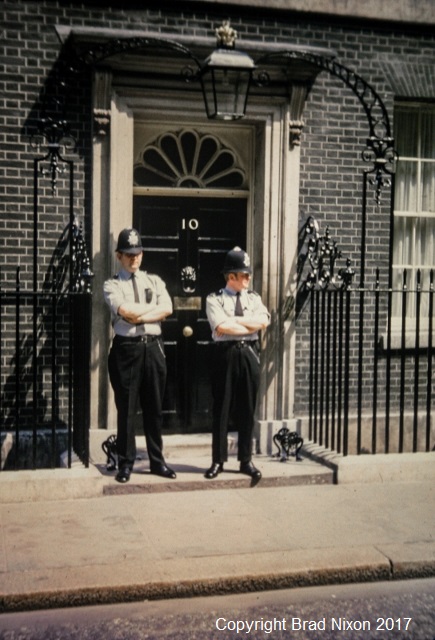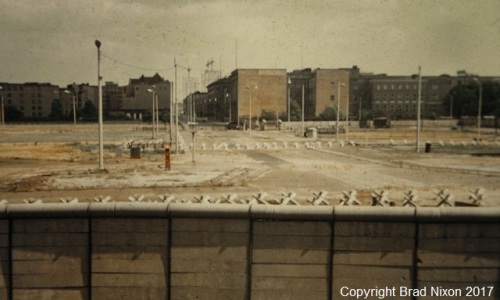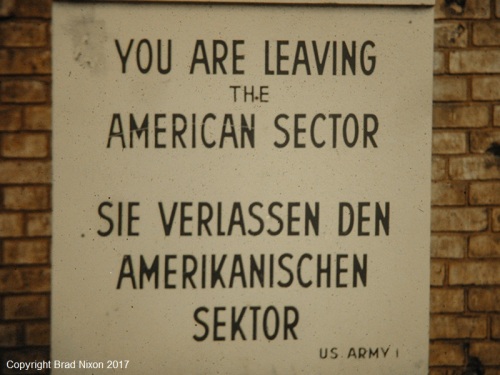Photographs in this post are transfers of old 35mm slides. Sorry about their poor condition.
Everywhere travelers go, there are barriers.
If you tour Walt Disney Concert Hall here in Los Angeles, there’s a better than even chance that you will not see the point of the place, the auditorium. The Hall’s schedule is jam-packed, meaning the auditorium is often busy with rehearsals or technical staging sessions. That’s true at most big-time performance venues. An exception that comes to mind is La Scala in Milan. You CAN peek in to see the hall from the gift shop, most days.
Museums, churches and countless other public spaces take diligent measures to make certain you don’t wander into restricted areas, knock over the statues on display or poke your elbow through that Monet as you gesticulate with enthusiasm about those brush strokes. That Gutenberg Bible, the Declaration of Independence, Magna Carta and other documents are there to be seen, often shielded by thick, tinted glass, but you won’t have a chance to turn a few pages and get the feel of reading them. Like good ol’ Beowulf in the British Museum:

Ancient civilizations your thing? Do not climb on the ruins. How do you think they got ruined to begin with?
This reality can be disappointing, as at Stonehenge. Thousands of people visit the site every year, and find that although they can get relatively close, they can’t walk into the circle of stones. Exceptions are at the solstices, when the public’s admitted. A recent summer solstice attracted 30,000 people. Enjoy your up close and personal connection with ancient England.
I had a different experience. I got there early: more than 40 years early. In 1971, the barriers had not yet gone up.

Yep, walked up and touched the standing stones. As it turns out, that’s not the best idea. The wear and tear of tens of thousands of visitors is highly detrimental, even to massive chunks of stone that’ve stood in the spot for 3- or 4,000 years. Lucky me.
Please spare me the comments about my traveling attire. I was 19. Clueless.
Even if you don’t get to Stonehenge, you’ll spend whatever time your schedule allows in London, and there’s a lifetime’s worth of sites to visit, places to eat, a pub or two to inspect, attend at least one theatrical performance, not to mention standing in line to have your picture taken at Platform 9-3/4 in King’s Cross Station.
There’s nothing more quaint and charmingly British than to stroll down quiet Downing Street to chat with the affable-but-serious officers standing outside the Prime Minister’s house, Number 10.

The world was like that in 1971. Things are different today on Downing Street.
Later on that trip, I was in St. Peter’s Basilica in Rome. There’s a statue there called Pieta, by an Italian named Michelangelo. I leaned on the marble rail and gazed at it. I won’t post my old, blurry photo, because it doesn’t capture the power of the piece. Besides, you know what it looks like.
Ten months later, a crazy man hopped over that railing (no great challenge) and wacked off pieces of the statue with a hammer. You can still see the statue, repaired, on the right as you enter, but there’s a sheet of bulletproof acrylic between you and S. Buonarroti’s work. Too bad.
Then, you’re going to the Forum, as I did. The place is a wreck. Time, weather, neglect, Visigoths, Napoleon’s army, builders carting off pieces for later structures and millions of tourists have worn the place down. Still, there were these big steps going up to a temple, and no self-respecting English major would miss the opportunity to climb up there and deliver a few lines from Marc Antony’s funeral oration.

Access wasn’t strictly forbidden; there weren’t any barriers. The last time I was there, I’d have needed to climb a barrier to repeat my teen-aged feat.
Sometimes, They Come Down
One significant barrier has disappeared in the years since 1971.
I went to Berlin on that trip. To get there, I had to leave Germany. Rather, I left West Germany. From the border with East Germany, I rode a train sealed against entry or exit and inspected by armed guards and dogs at the few stops we made, showing my passport and entry visa to officials who boarded the train each time.
Berlin itself was divided into eastern and western sectors. I went to a viewing platform to look over the wall into East Berlin…

… and posed for a souvenir photograph.

Border Story

I went into East Berlin. The routine required showing my passport to a guard in a rickety shack on the border.
The man, wearing the uniform of the German Democratic Republic, scrutinized the passport. I was ill at ease, entering a country that was at odds with the one whose passport I carried.
As it happens, I have the same last name as the American president at the time.
The guard glared at me.
“Nixon?” He demanded.
I nodded.
He wagged a finger at me, his face grim.
“No Nixons here!”
He cracked a smile, and the five or six other officials in the shack broke up laughing.
A human moment on one of the most dire borders of its era.
That barrier — the Berlin Wall — is gone. Not all barriers are permanent, although many remain. I often think of that moment, and the laughing acknowledgement of something beyond borders that connects people, if nothing more than humor at the expense of politicians.

Not everything is funny, but we can only hope to connect.
© Brad Nixon 2017. Some photographs © J. S. Kersey 2017, used by kind permission.
Great post. Some old barriers fall; some new one rise.
In the 1980s, I visited Washington, D.C., several times, and always made a point to visit the Capitol. In those days, you could just walk up the front steps and into the building to wander around at your leisure. There were no metal detectors. No guards met you at the entrance; no one checked your bags.
Eventually, I actually discovered a side door entrance to the Capitol that lead to the Senate dining room. I just walked in in the mornings and ordered breakfast. And I was served! No Questions asked! A different world, then.
LikeLike
By: LaBoheme on December 20, 2017
at 2:25 pm
Yeow. That’s a great tale from another era! Thanks. And, by the way, did you PAY for your breakfast? If not, we taxpayers have an issue to discuss with you.
LikeLike
By: Brad Nixon on December 20, 2017
at 2:35 pm
I did pay! I was a good, responsible taxpayer. But, it being a dining room mainly for Congress personnel, it was REALLY cheap. No one asked for my ID. Ah, real freedom . . .
LikeLike
By: LaBoheme on December 20, 2017
at 8:19 pm